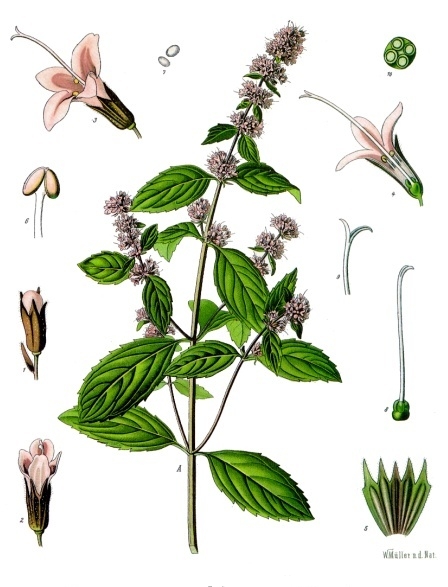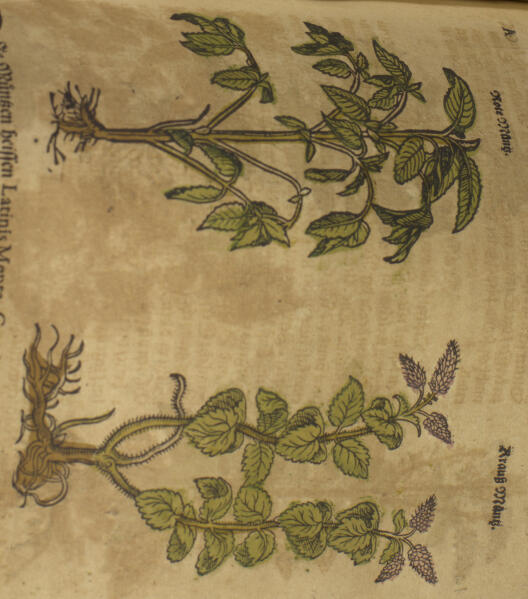

botanical description
order: Lamiales
family: Lamiaceae
genus: mint (Mentha)
attributes: herbaceous, contains essential oils, aromatic scent
origin: unkown, all around the world
habitat: regions with moderate climate in the northern hemisphere, grows in moist environments like swamps
But woe to you, Pharisees! For you tithe mint and rue and every herb, and pass over judgment and the love of God.
Luke 11,42
Owing to it‘s aromatic scent, mint was used as early as antiquity as remedy, which has inspired it‘s Greek name ἡδύοσμον (hēdyosmon). It is supposed to help against headache, cramps and gastrointestinal problems, when administered as oil or tea. Nowadays mint is one of the most popular tea herbs.
A tax on the tenth part of spices such as mint, dill and kummel was justified means by the Old Testament (3 Moses 27,30; 5Mose 14,22f), although mint is not specifically mentioned there. It remains unclear if this tax was actually raised. In the New Testament the tax on mint is referred to by Jesus when critizising the Pharisees (Matthew 23,23/Luke 11,42). He accuses them of heading the law, but ignoring justice, mercy and faith.
mentions: several
Sources
Riede, Peter: Minze, in: Das wissenschaftliche Bibellexikon im Internet (März 2015), URL: https://www.bibelwissenschaft.de/wibilex/das-bibellexikon/lexikon/sachwort/anzeigen/details/minze/ch/43487256efce4cba452228ae231c1f61/ (abgerufen am 01.05.2023).
Modern King James Version




